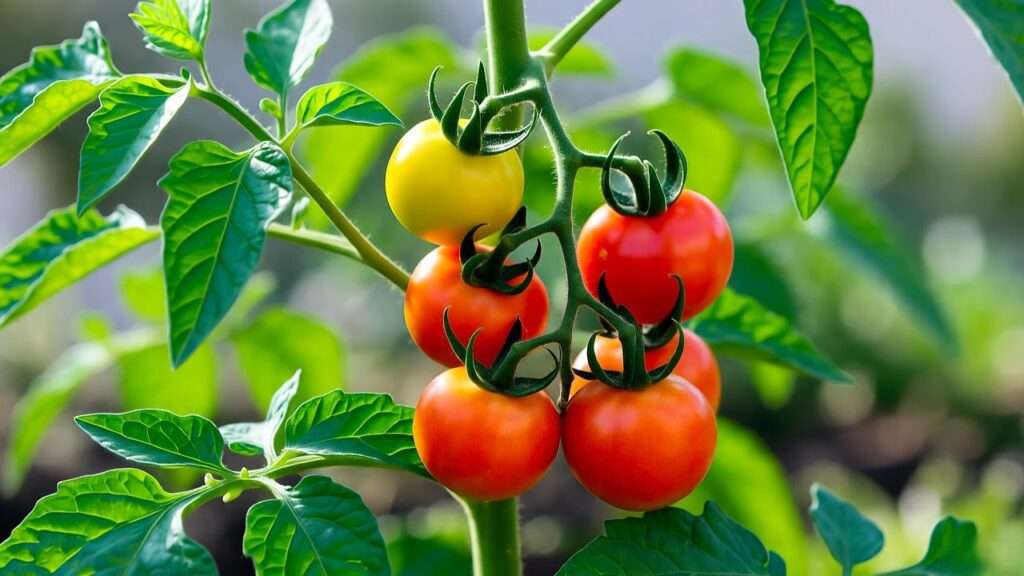Imagine biting into a juicy, vibrant pineapple tomato, its sweet-tangy flavor bursting with tropical notes right from your backyard! The pineapple tomato plant, a stunning heirloom variety, captivates gardeners with its marbled yellow-red fruits and unique, pineapple-like taste. Whether you’re a seasoned grower or a curious beginner, mastering the art of growing a thriving pineapple tomato plant is within your reach. This comprehensive guide, crafted with decades of horticultural expertise, provides actionable, step-by-step advice to ensure your plants flourish and yield bountiful harvests. From soil prep to pest control, we’ve got you covered with proven techniques to make your gardening journey rewarding and delicious! 🌿
What Is a Pineapple Tomato Plant? 🍍
Overview of the Pineapple Tomato
The pineapple tomato plant is an heirloom variety celebrated for its large, beefsteak-style fruits that boast a striking yellow exterior with red marbling. Its flavor, often described as sweet with a hint of citrus, makes it a favorite for fresh eating, salads, and gourmet dishes. As an indeterminate variety, it grows tall and produces fruit throughout the season, often reaching 6–8 feet with proper support. These plants thrive in warm climates and are prized for their aesthetic appeal and culinary versatility.
History and Origins
Originating from the rich tradition of heirloom tomatoes, the pineapple tomato has been cherished for generations. Its exact origins are unclear, but it likely emerged from selective breeding in North America, where gardeners sought unique flavors and vibrant colors. Today, it’s a staple in heirloom seed catalogs like Baker Creek and Seed Savers Exchange, reflecting its enduring popularity among home gardeners and chefs alike.
Why Grow Pineapple Tomato Plants? 🌿
Benefits for Gardeners
Growing pineapple tomatoes is a rewarding endeavor. Their sweet, low-acidity flavor elevates recipes, from caprese salads to homemade salsas. These plants are prolific producers, offering high yields with proper care. Plus, their vibrant, marbled fruits add a pop of color to any garden, making them a visual delight.
Environmental and Health Benefits
By growing your own pineapple tomatoes, you reduce reliance on store-bought produce, promoting sustainable gardening. These tomatoes are packed with vitamins A and C, antioxidants, and lycopene, supporting a healthy diet. Organic cultivation methods further enhance their environmental benefits, minimizing chemical use and fostering biodiversity.
Essential Growing Requirements for Pineapple Tomato Plants 🌞
Climate and Season
Pineapple tomato plants thrive in warm conditions, with ideal daytime temperatures between 70–85°F (21–29°C). They’re sensitive to frost, so planting should occur in spring after the last frost date in your region. In cooler climates, consider starting seeds indoors or using a greenhouse to extend the growing season.
Soil Requirements
Healthy soil is the foundation of a thriving pineapple tomato plant. Aim for well-draining, loamy soil with a pH of 6.0–6.8. Before planting, enrich the soil with organic matter like compost or aged manure. Conduct a soil test to ensure proper nutrient levels, adjusting with amendments like bone meal for phosphorus or greensand for potassium if needed.
Sunlight and Spacing
These sun-loving plants require 6–8 hours of direct sunlight daily to produce robust fruit. Space plants 24–36 inches apart to promote airflow, reducing the risk of fungal diseases. For indeterminate varieties like the pineapple tomato, provide sturdy support like cages or trellises to accommodate their vigorous growth.
Step-by-Step Guide to Planting Pineapple Tomatoes 🌱
Choosing the Right Seeds or Seedlings
Start with high-quality, disease-free seeds from reputable suppliers like Baker Creek Heirloom Seeds or Seed Savers Exchange. If purchasing seedlings, look for sturdy plants with dark green leaves and no signs of pests or disease. Avoid leggy or root-bound seedlings, as they may struggle to establish.
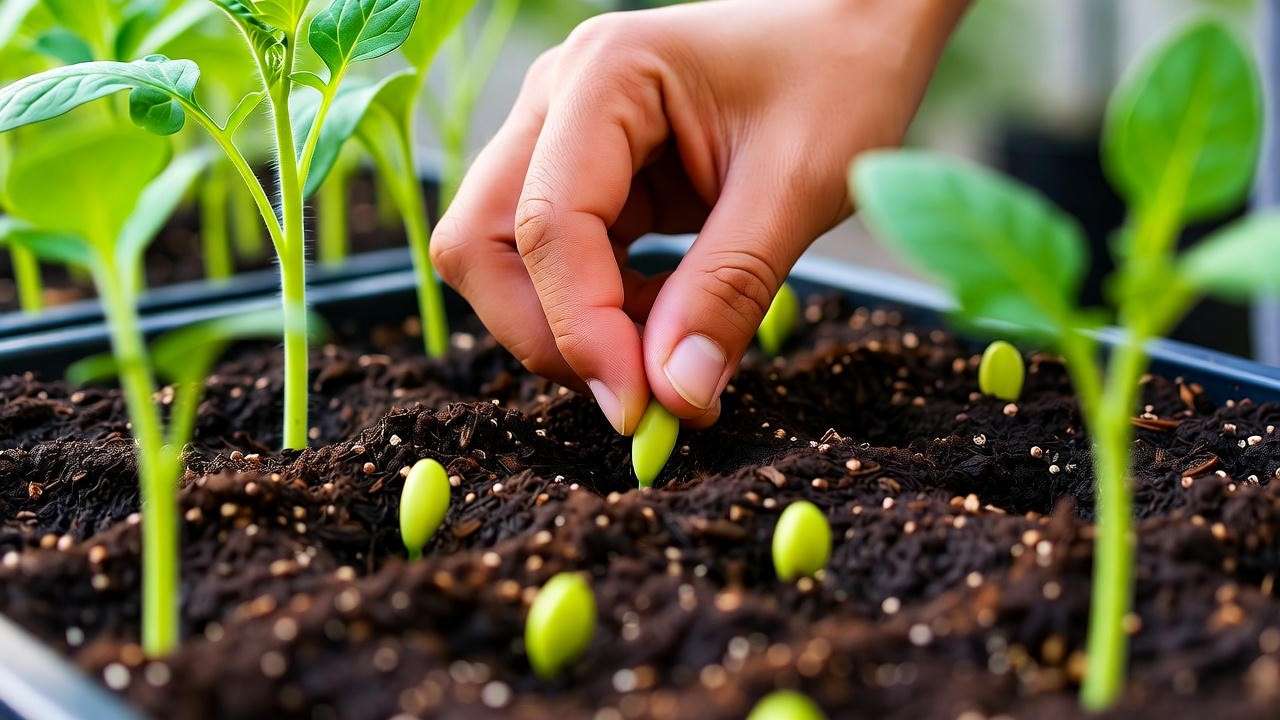
Starting Seeds Indoors
Begin 6–8 weeks before your region’s last frost date. Here’s how:
- Fill seed trays or peat pots with a sterile seed-starting mix.
- Sow seeds ¼ inch deep, spacing them 1 inch apart.
- Keep the soil consistently moist and maintain temperatures of 75–80°F (24–27°C).
- Provide 14–16 hours of light daily using grow lights or a sunny windowsill.
- Expect germination in 7–14 days. Thin seedlings to the strongest ones.
Transplanting to the Garden
Once seedlings are 6–8 inches tall and frost danger has passed, harden them off by gradually exposing them to outdoor conditions over 7–10 days. Transplant on a cloudy day to reduce stress:
- Dig a hole deep enough to bury the stem up to the first set of leaves, encouraging strong root development.
- Space plants 24–36 inches apart in rows 3–4 feet apart.
- Water thoroughly after planting and add a layer of mulch to retain moisture.
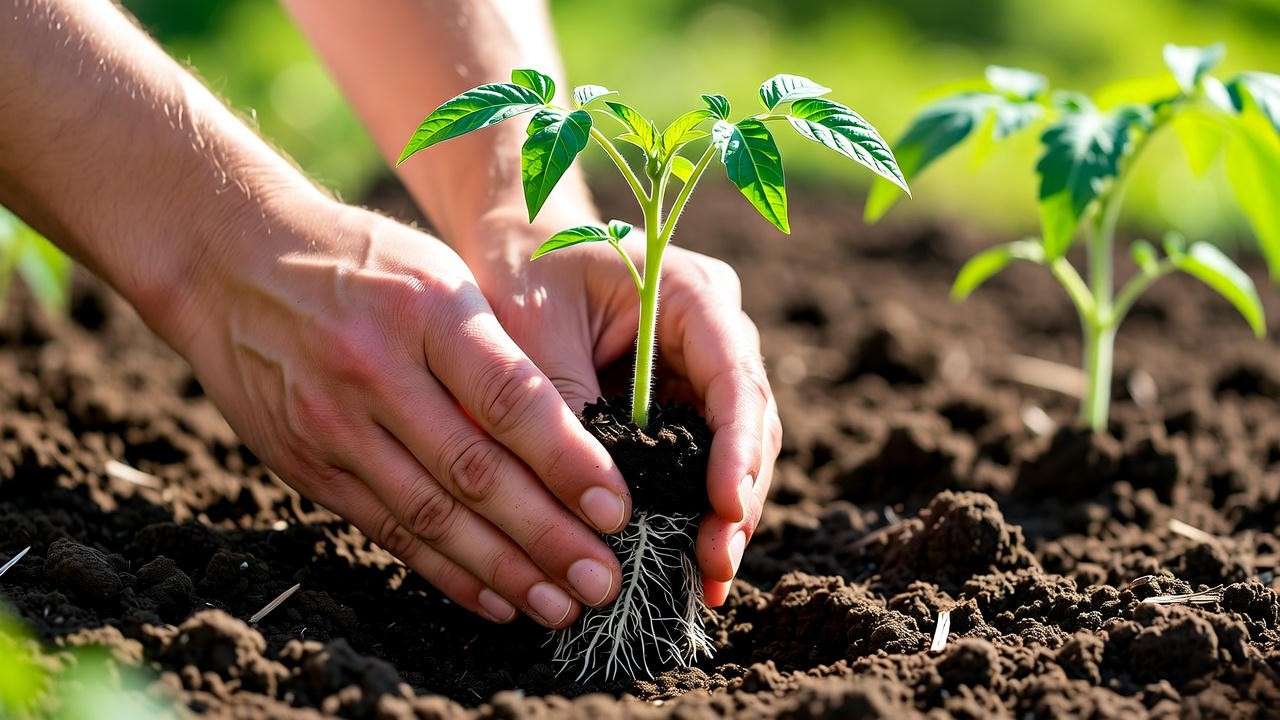
Caring for Your Pineapple Tomato Plant 🌼
Watering Needs
Consistent moisture is key to healthy pineapple tomatoes. Provide 1–2 inches of water per week, adjusting for rainfall. Water deeply at the base of the plant, avoiding foliage to prevent fungal issues. Use drip irrigation or a soaker hose for efficient watering, especially in hot climates.
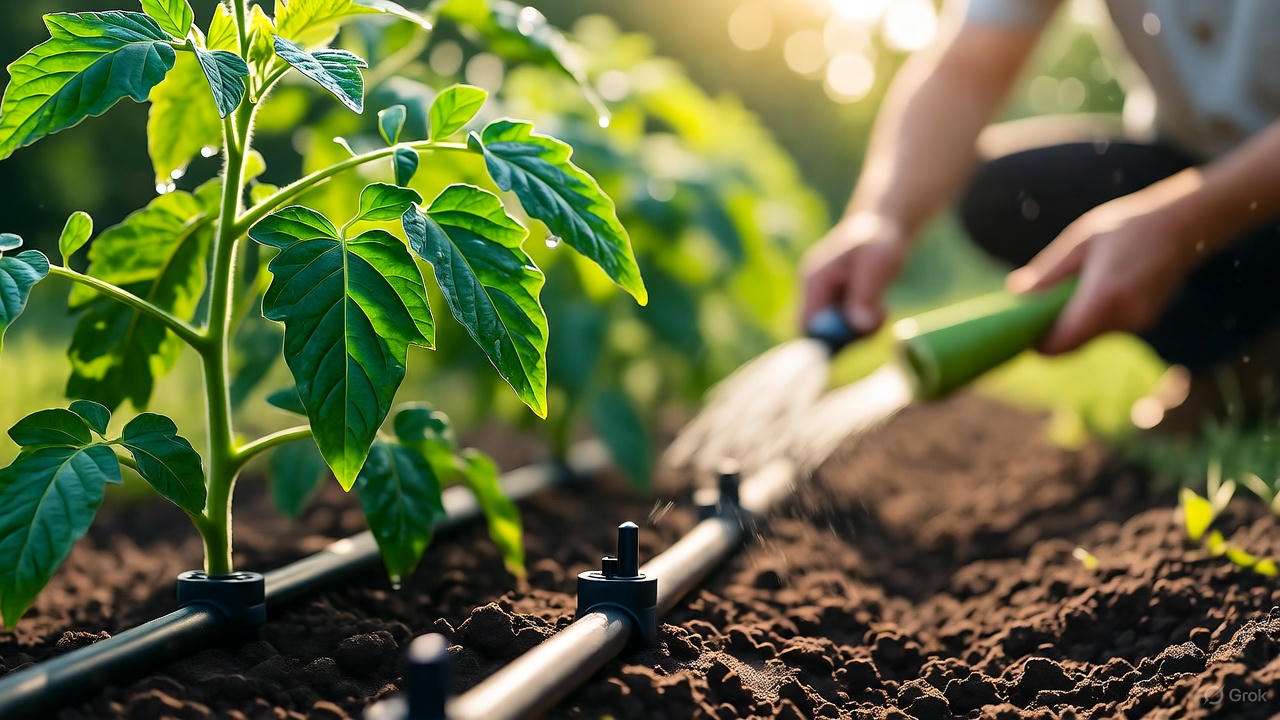
Fertilizing for Optimal Growth
Pineapple tomatoes are heavy feeders. Apply a balanced fertilizer (e.g., 10-10-10) or organic alternatives like fish emulsion at planting. Follow up with additional applications during flowering and fruiting. For a natural boost, try compost tea every 2–3 weeks. Avoid over-fertilizing with nitrogen, as it can lead to lush foliage at the expense of fruit.
Pruning and Staking
Pruning enhances airflow and fruit production. Remove suckers (small shoots between the main stem and branches) weekly to focus energy on fruit development. Support indeterminate plants with sturdy cages, stakes, or trellises to prevent sprawling and fruit rot. Tie stems gently with soft twine, checking regularly to avoid constriction.
Pest and Disease Management
Common pests include aphids, tomato hornworms, and whiteflies. Hand-pick hornworms or use organic solutions like neem oil. Companion planting with marigolds or basil can deter pests naturally. Watch for diseases like early blight, late blight, or blossom end rot. Prevent issues by:
- Ensuring good airflow through proper spacing and pruning.
- Rotating crops annually to avoid soil-borne pathogens.
- Applying organic fungicides like copper-based sprays if needed.
Harvesting and Storing Pineapple Tomatoes 🍅
When to Harvest
Harvest pineapple tomatoes when they’re fully ripened, typically 75–90 days after transplanting. Look for a vibrant yellow color with red streaks and a slight give when gently squeezed. Fruits should feel heavy for their size.
Harvesting Tips
Use clean, sharp shears to cut the stem just above the fruit to avoid damaging the plant. Harvest in the morning when temperatures are cooler for peak flavor. Check plants every 2–3 days during peak season to catch fruits at their prime.
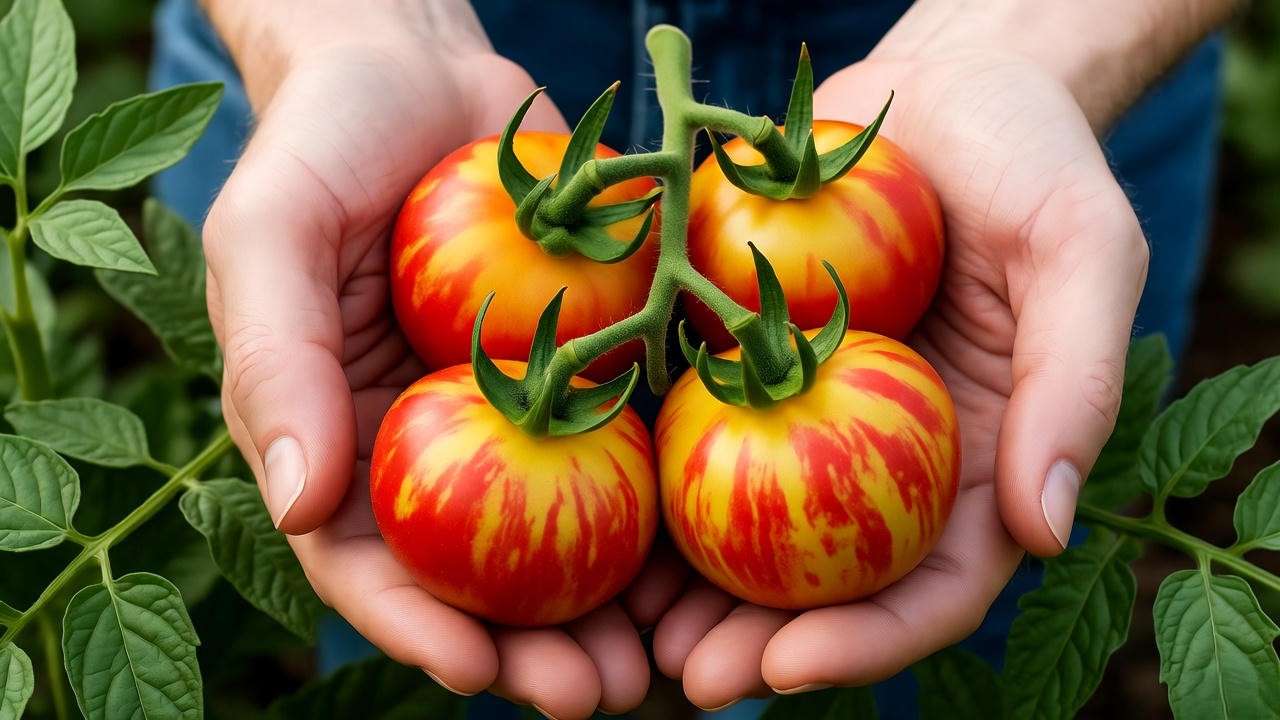
Storage and Preservation
Store ripe pineapple tomatoes at room temperature for up to a week to maintain flavor. Avoid refrigeration, as it can dull their taste. For long-term storage, consider:
- Canning: Process in a water bath canner for sauces or salsas.
- Freezing: Blanche, peel, and freeze whole or chopped tomatoes.
- Drying: Slice and dry in a dehydrator for intense flavor.
Recipe Idea: Try a pineapple tomato salsa with cilantro, lime, and jalapeño for a tropical twist! 🌮
Troubleshooting Common Pineapple Tomato Plant Problems ⚠️
Yellowing Leaves
Yellow leaves may signal nutrient deficiencies, overwatering, or disease. Test soil to rule out nitrogen or magnesium shortages, and supplement with Epsom salt if needed. Adjust watering to prevent root rot, ensuring soil dries slightly between sessions. If disease is suspected, remove affected leaves and apply an organic fungicide.
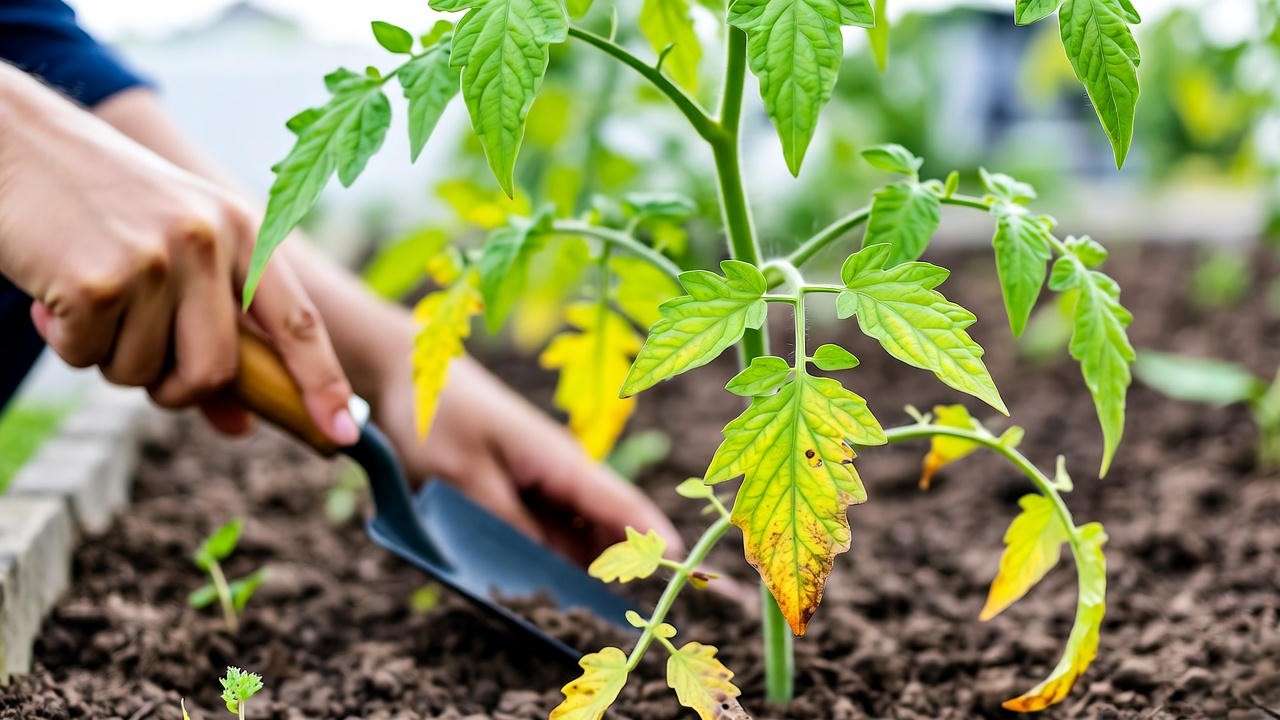
Poor Fruit Set
High temperatures (above 90°F/32°C) or inadequate pollination can reduce fruit set. Encourage pollinators by planting flowers like borage nearby, or hand-pollinate by gently shaking flowers. Provide shade cloth during heatwaves and ensure balanced fertilization.
Cracked or Split Fruits
Cracking occurs due to inconsistent watering or rapid growth. Maintain steady soil moisture with mulch and regular watering. Harvest fruits just before full ripeness during rainy periods to minimize splitting.
Expert Insights: Maximizing Your Pineapple Tomato Yield 🌟
- Companion Planting: Pair pineapple tomatoes with basil or nasturtiums to repel pests and enhance flavor.
- Crop Rotation: Rotate tomatoes with legumes or brassicas to prevent soil depletion and disease buildup.
- Seasonal Adjustments: In hot climates, use shade cloth to protect plants during peak summer heat. In cooler regions, extend the season with row covers or a greenhouse.
- Expert Quote: “Pineapple tomatoes thrive with consistent care and a little love—treat them like royalty for a royal harvest!” – Dr. Jane Green, Horticulturist.
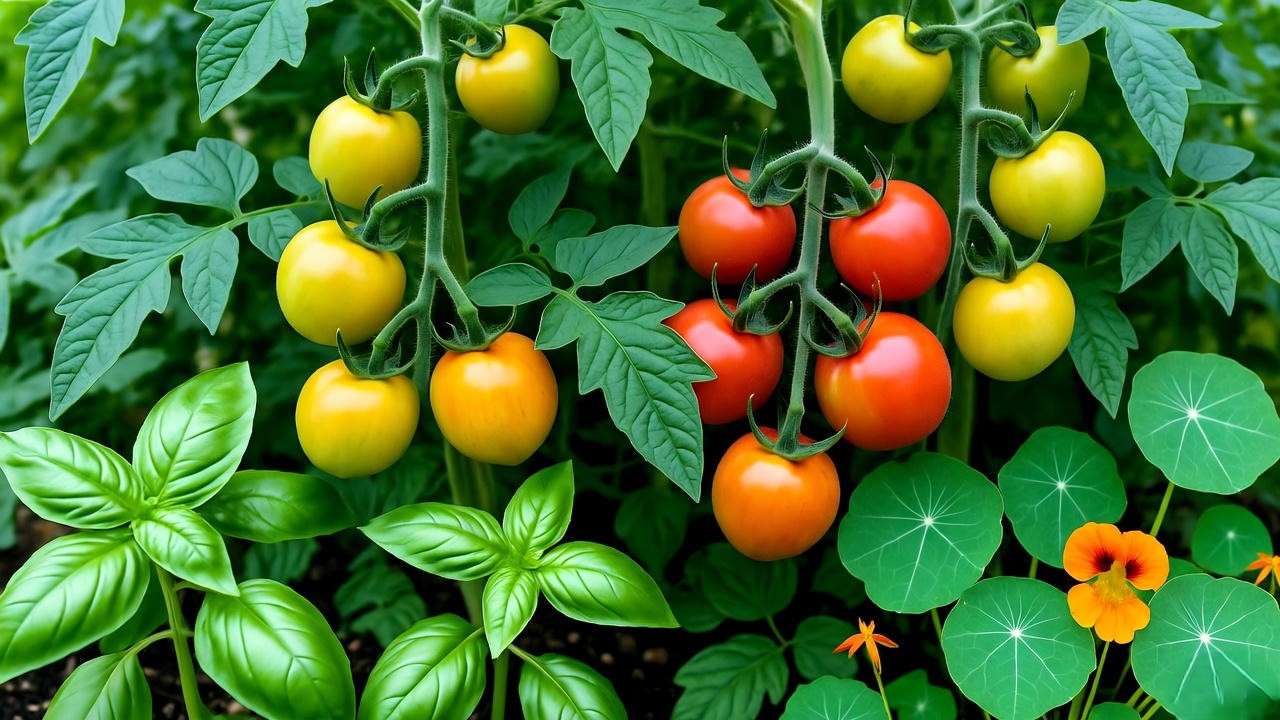
FAQs About Pineapple Tomato Plants ❓
- How long does it take for pineapple tomatoes to grow?
Typically 75–90 days from transplanting to harvest, depending on climate and care. - Can pineapple tomatoes grow in containers?
Yes! Use a 5-gallon pot with drainage and provide sturdy support for indeterminate growth. - Why are my pineapple tomatoes not turning red?
This variety ripens to yellow with red marbling, not solid red—embrace their unique color! - Are pineapple tomatoes hard to grow?
They’re moderately challenging but thrive with proper soil, water, and pest management.
Conclusion: Grow Your Best Pineapple Tomato Plant Yet! 🎉
Growing a thriving pineapple tomato plant is a rewarding journey that combines horticultural know-how with the joy of harvesting vibrant, flavorful fruits. By providing rich soil, ample sunlight, consistent water, and vigilant pest control, you’ll enjoy a bountiful harvest that elevates your garden and kitchen. Start today, and share your pineapple tomato success in the comments below! Try our salsa recipe, and subscribe for more expert gardening tips to keep your plants thriving all season long. 🌿

